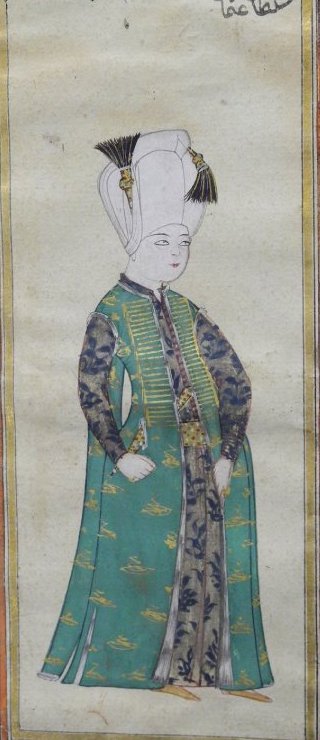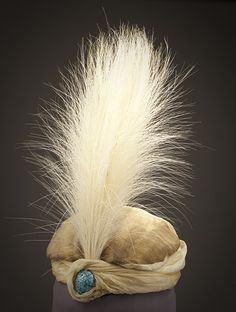In the world of interior design, French words are often used. Not only is it important to know what they mean, but I've found that practicing these words out loud is really helpful and gives me the confidence I need before using them in a conversation. The key for me is remembering how many syllables are in the word and then to say the word with some degree of panache! Here are seven of my favorites:
1. BIBELOT Word origin from 19c. French, 2 syllables, pronounced beebuh-loh, a small object of curiosity, beauty or rarity.
Used in a sentence: "Her interiors are always accented with several wonderful bibelot creating a visually rich and compelling room to be in; the one that caught my eye was a stunning Art Deco enameled and diamond curio box."
Art Deco enameled and diamond curio box
2. AIGRETTE From early 17c. French, 2 syllables, pronounced ey-gret, a tuft of long, white heron (usually egret) plumes used as part of an ornamented decorative headdress. Such plumes were highly prized as ornaments in Middle Eastern ceremonial dress. Jeweled aigrettes with a tuft of plumes became an adornment for turbans in Turkey, particularly during the Ottoman period (1281-1924), and later became fashionable on European ladies turban hats in the early 20th century.
(LtoR) Jeweled turban, Drawing of an Ottoman period man wearing turban with aigrettes, Poiret ladies turban hat 1920, Ottoman turban aigrette with swan feathers, inlaid with rubies, pearls, and turquoise
Used in a sentence: "Tyger Tyger has a unique collection of accent throw pillows that feature aigrette adornments on the front of the pillows made from carved jade, semi-precious stones and exotic plumes."
Detail of velvet tiger pillow from the Tyger Tyger Collection with aigrette of carved coral jade with an overlay of semi-precious stones and ostrich tuft flourish
PASSEMENTERIE From 16c. French, 3 syllables, pronounced pahs-mahn-tree, trimming of gimp, cord, braid, tassel fringe, beads. Famous French passementerie houses include, Houlès and Scalamandre.
Used in a sentence: "Houlès passementerie is often selected for the decoration of palaces and castles like Château de Versailles."
Various forms of illustrated passementerie (above)
Houles passementerie
4. PIECE de RESISTANCE From French, 6 syllables, pronounced pee-es duh ri-zee-stahns, literally means "piece of resistance", the outstanding item (the prize piece or main exhibit) in a collection. A collector's item, showpiece, curiosity, peculiarity, rarity, oddity, something highly unusual and perhaps worthy of collecting.
Used in a sentence: "The piece de resistance in the room was a chaise longue upholstered in a velvet leopard!"
note: Chaise longue (pronounced shez-lawng) is sometimes incorrectly written and pronounced as "chaise lounge"
Leopard velvet chaise longue
5. OBJET D'ART From late 19c. French, 3 syllables, pronounced awb-zhe dar, means literally "art object", or an object of artistic worth or curiosity, especially a small object. It therefore covers a wide range of works, usually small and three-dimensional, of high quality and finish, in areas of the decorative arts.
Used in a sentence: "The flea market in Paris is one of my favorite places to find the perfect objet d'arts for my clients, like the pair of Foo Dogs I found on my last trip there ."
Pair of 19c. emerald glazed Foo Dogs
6. ATELIER From mid 19c. French, 2 syllables, pronounced atuh-lyey, a workshop or studio, especially of an artist, artisan or designer; originally from 14th century Old French atelier, referring to a carpenter's workshop piled with wood.
Used in a sentence: "The atelier at Le Manach, located in Tours, France, still employs its original looms from the 18c. to produce the leopard and tiger velvet prints for which they are famous."
The atelier at Le Manach in Tours. France
7. CHINOISERIE From late 19c. French, 3 syllables, pronounced shee-nwazuh-ree, a style of ornamentation chiefly from the mid-17th to mid-18th century in Europe, then revived during the Regency (1811-1820), characterized by intricate patterns and an extensive use of motifs identified as Chinese. Currently, it is a style of decorative or fine art based on imitations of Chinese motifs.
Used in a sentence: "The red lacquered chair was chinoiserie and looked stunning set in front of a panel of framed chinoiserie wall paper."
Chinoiserie vignette
Just for a bit of fun at the next cocktail party you attend with fellow designers, try using all seven French words in one sentence! Let me give it a try..."Madeleine Castaing had an antique shop in Paris in the 30's filled with unusual bibelot and objet d'art, however the piece de resistance was a chinoiserie chaise longue in leopard velvet, detailed with silk passementerie from the atelier of Scalamandre that she refused to sell to anyone. Apparently a beautiful woman walked into her shop wearing a stunning aigrette on her headdress and convinced Madeleine to sell it to her, to which Madeleine agreed because she felt this woman would look exquisite, lounging on the chaise, and the two would make a good marriage."
Tyger Tyger offers many piece de resistance. For inquiries about Tonia Interiors design services or purchasing from Tyger Tyger, please visit the Contact Page.











